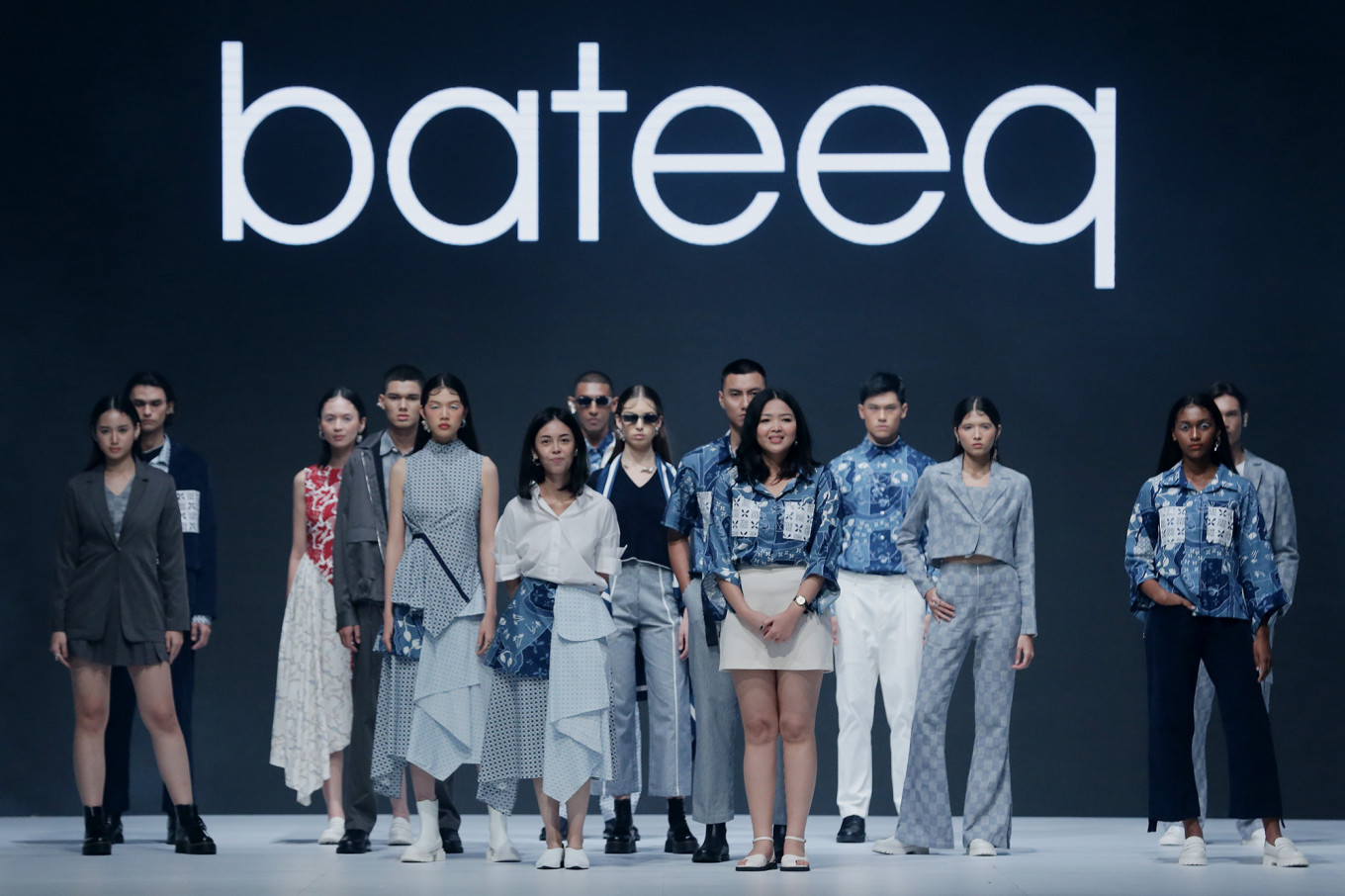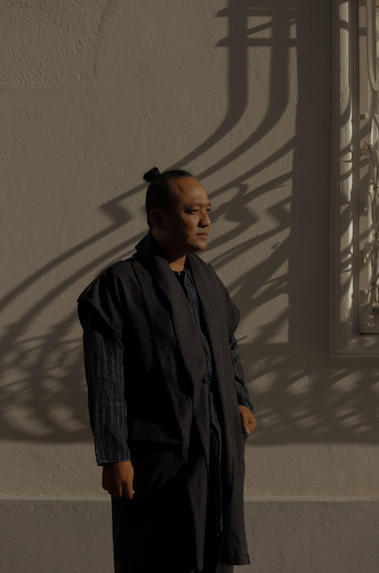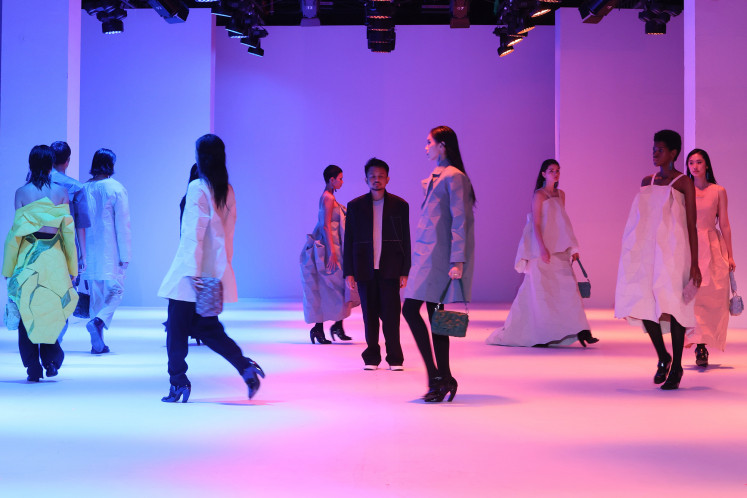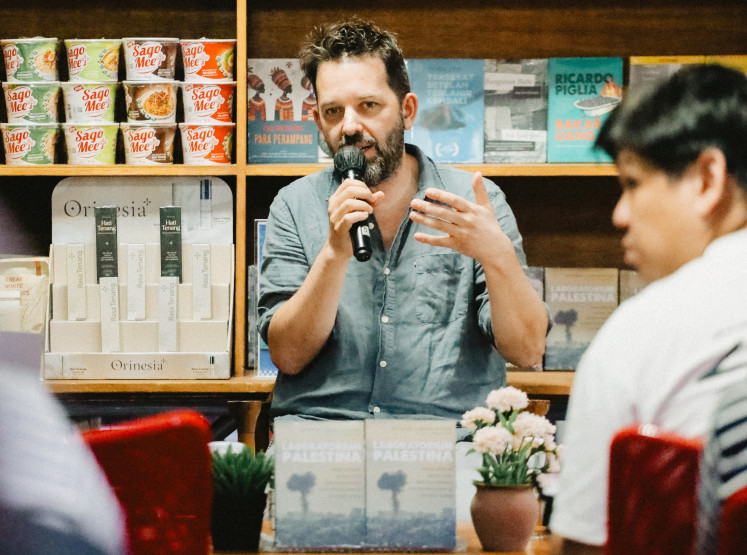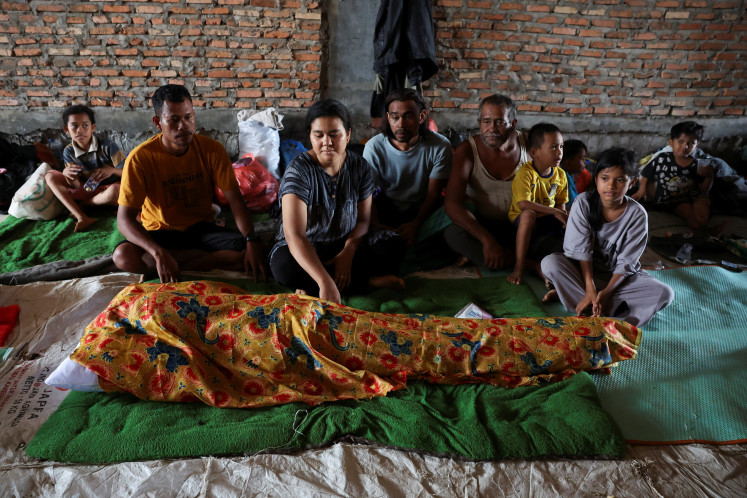Popular Reads
Top Results
Can't find what you're looking for?
View all search resultsPopular Reads
Top Results
Can't find what you're looking for?
View all search resultsDesigners shaping up batik for future generations
Change text size
Gift Premium Articles
to Anyone
S
ome reinterpret the patterns into a new mold, and others reinvent the wear-ability. No matter the method, the purpose is the same—to keep the passion for batik alive for years.
Batik has always been the pride and joy of Indonesians. Unfortunately, that is not the case for some youths like Galang Putra Pamungkas, a 19-year-old communication student from Depok, West Java, who believes it is a bit of a drag.
"I don't like wearing batik [which is why I dread Batik Day]. For me, both the colors and the designs are archaic," said Galang. "There is cool batik [with vibrant colors and modern patterns] that young urban professionals often wear, but [the designs themselves] have no modern variations whatsoever."
Due to the lack of variations, he perceives that anyone wearing those "cool batik" would be recognized as young urban professionals or civil servants.
"Someone needs to do something [so that batik can be] more appealing to the youth. Though, I understand [the need to preserve its traditional tones]."
Preservation and reaffirmation
Fashion designer Lulu Lutfi Labibi has been exploring batik and lurik since 2011. Lulu is one of the preservers, trying to rekindle the flame between Indonesians and their heritage in its proper form.
"For me, when you say 'batik', it means the [traditional Javanese cloth] that has one must-have process in its production, which is to draw all the different patterns with malam [inking wax] and canting [pen-like wax applicator]," said Lulu. "That's how I produce my clothes—we do it here [in our studio in Yogyakarta]."
Nevertheless, Lulu admits the need for printed batik. He mentions economic reasons as the primary cause, as traditionally drawn batik can be expensive.
"We need printed batik to get all levels [of people] of our society to wear [the cloth]. However, the producers, designers and sellers need to be honest and inform their market that it is not the actual batik in its traditional sense. [Rather, it is] fabric printed with batik patterns," Lulu explained.
"We can't preserve batik if we don't properly inform the masses about its origin and how it is supposed to be made. The values and meanings behind the majestic fabric will dwindle over time."
Break boundaries: Designer Lulu Lutfi Labibi believes that reinventing the wear-ability while conveying relevant stories would make batik more appealing to youth. (Courtesy of Lulu Lutfi Labibi/.)For contemporary-fashion brand Bateeq, the mission has always been to bring batik closer to the youth. Bateeq has been playing with concepts beyond mixing-and-matching traditional motifs with modern geometries, colors and silhouettes.
"[We have evolved] from our vision, which was to be able to preserve culture by reimagining traditional batik motifs, hoping that it can be relevant to the target market of Bateeq and [can be worn] on various occasions," said Galuh Nurita, designer at Bateeq.
"Batik is more than just a traditional-drawing technique but also a blend of stories, arts and culture that are brought along and can develop over time and technological developments."
Founded in 2013, Bateeq started by adapting the form. It launched parkas, voluminous outers, cargo pants, layered blouses and even T-shirts. For the last several years, however, it has focused more on the materials.
"The selection of materials tends to be comfortable for everyday use," said Galuh. On top of this consideration, Bateeq has also been exploring sustainable materials, such as waste-cotton threads.
Inventions and reinventions
To make his conventionally made batik and lurik designs more appealing to the youth, Lulu explores their wear-ability. The designer—considered a contemporary fashion darling—has been known for infusing the wabi-sabi (imperfect, impermanent and incomplete aesthetics) approach into his designs, topped with raw draperies. However, it comes with a cost.
"I think this is a problem for many designers as well. There'll be copycats. I used to be very angry. There were times [when I constrained] my creative process with thoughts like, 'I can't make this—this is too easy to copy’. But now, I just let go," he said.
"I can't let [these thoughts] consume me and my creativity. I [convince myself that it means] I'm sharing my blessings with others."
Try new things: Tommy Ambiyo Tedji (center, in black) consistently experiments with new shapes and materials for Byo. (Jakarta Fashion Week/Yoseph Budiyanto)However, it might be fine for Tommy Ambiyo Tedji. The designer behind Byo, an accessories brand known for its experimental pieces, is relentless with his experiments and innovations that are hard to replicate. Each of Byo's pieces is woven by hand, using a specific interlocking method to shape individual PVC or leather pieces into bags, clutches or straps. Interestingly, the alien-looking pieces are often products of reimagining traditional elements, including batik.
"The core of our brand is futuristic and [to envision the future], but I want them to have an element of Indonesian identity, too, even if it's not too literal. So usually, we look for another point-of-view," said Tommy. “[For example, we once took inspiration] from the Kawung motif. We combined it with industrial materials, and the bag silhouettes were inspired by popular contemporary technologies such as Apple products."
Tommy added that traditional patterns are something he wants to explore consistently. Although it is not shown directly, Tommy explained that people are always indirectly influenced by all the repetitive geometrical things around them.
"For example, [when I see harmonious batik motifs], I would think of how to make it a modular system [for my bags]. The original motive will not be explicitly shown in the result [because it was already reinterpreted into something else]."
He then corroborated that such a simple adaptation process only applies to some Byo products. Exceptions apply, such as eco-friendly Byo Logic—a series that Tommy created to help reduce the waste from leather production.
"We use materials that are not new, such as post-production leather patches [which are softer and don't lock easily into one another]. The production process takes almost two years of exploration, from idea to launch, because trial-and-error can be up to four times," Tommy admitted.
"However, all the materials, the design process and the full production are from Indonesia. [I'd say] the Indonesian element [in Byo Logic] lies more in the way it is made, the patience of the craftsmen, and the intricate artistry by-hand."
While traditional patterns inspire Tommy to make his creations, Lulu is more inspired by words. Each of Lulu's collections is paired with poems, which can be written by Lulu himself or others. Case in point, his 2020's Sandang Hening Cipta (Silent Clothing) was inspired by Joko Pinurbo's poems in Baju Bulan (Moon's Dress), while his 2022's Jeda Yang Ajaib (The Miraculous Pause) was inspired by a poem by Gunawan Maryanto of the same title.
"I like to read, and I like to write. Probably because my father also liked to write; his journals inspire me a lot," said Lulu, admitting that the poems are one of the most prominent appeals in his products—especially for the younger customers.
"It eliminates the distance between the people who wear my designs and me," he said. "Batik is a story; my collection is a story. People like to read about it because they know they're not buying mere clothing but the feelings behind it."
ohmg

